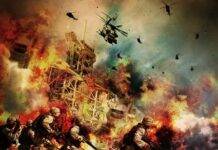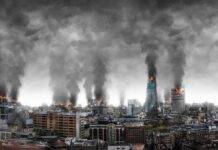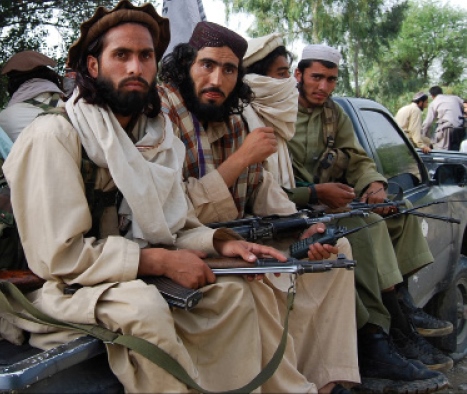In the wake of the recent dastardly act of violence and terror in Pulwama, the whole nation is seen protesting in the streets. Anti-Islam and anti-Pakistan slogans have been ringing incessantly like alarm clocks. Contrariwise, politicians and public figures have resorted to the blame game, creating a narrative that is difficult to comprehend. Response of the media and journalists of leading television channels and newspapers, also do not seem to take a different path. A macro analysis, of the common Indians response, post the Pulwama attack, gives the impression that the bugle for war has been sounded. And that the entire nation is ready to fight a war with Pakistan.
Herein, attention is to be given to inexplicable headlines, news stories and comments on social media platforms that have created a narrative that is uncomfortable for a democratic society. Few such examples are listed below for recapitulation:
- CRPF convoy attacked in Pulwama, How will we avenge the deaths? | The Newshour Debate
- Pulwama attack: Pakistan warns India against military action | BBC.com
- Twitter Wants to Boycott Kapil Sharma Show For Navjot Singh Sidhu’s Comments on Pulwama Terror Attack
- Why Not Mention Pakistan?’ Sania Mirza Trolled Over Tweet Condemning Pulwama Attack
- Tamatar ka jawab atom bomb se’: Pakistan journalist’s ‘Tauba Tauba’ video threatening India with nukes
- Miss use of a filmy dialogue ‘Hows the Josh’ by media professionals
When such content is disseminated via different media sources, as a response the aam aadmi, is fuming in anger. It is needless to state that assessment of the content, analysis of the crisis is a far cry. The anger and transitory sense of patriotism creates violent response, wherein innocent citizen becomes victims of unwarranted violence and harassment.
- Note post the Pulwama attacks, Kashmiri students in Dehradun, Maharashtra and other areas were attacked.
- A Karachi Bakery outlet in Bengaluru was forced to cover up the word ‘Karachi’ on its main name board on, after a mob protesting the reference to Pakistan gathered in front of it.
- Protest march, candle light march, with anti-Pakistan slogans have been doing the rounds
- Video messages that urge India ought to go on war, not realizing that common man doesn’t fight at the border or that economically India cannot afford to fight a war.
The government is occupied in making military and strategic plans, to retaliate the attacks. The families of the victims are nursing their unbearable scars. Media aggression in reportage has also subdued. Question remains, what is the aam aadmi doing post the exasperating reflex actions in the form of protests and rantings on social media?
One can safely say that, everyone is back to their respective lives and the adrenalin rush for the time being has been rested.
But the premise, of such a response and uproar by the citizens, in the event of a national crisis needs to be examined. Two vital issues that are of the prime of concern are i) how the public opinion is nurtured and ii) the role of a popular narrative in eliciting peoples collective response.
- At the core public opinion is the measure of what the people think about a specific matter, incident party, political figure, etc. Historically, it has always been challenging to precisely assess what the public thinks about a particular subject. Nonetheless, most forms of democracy are grounded on the understanding that the government will operate keeping the interest of the people in mind. It is easy to locate the acknowledgment of the people’s role in several historical documents. For instance, the Constitution of the United States, which begins with the phrase ‘We, the People.’ It is an established fact that public opinion can influence those in power. In a democratic setup, politicians ought to listen to public opinion, if they seek to keep their jobs. For disgruntled citizens can vote out those who disregard their views. If the public overpoweringly clash with the government, the government could be in grave danger of rebellion or breakdown.
In the contemporary times, with special reference to India, the above mentioned understanding of public opinion appears to be a utopian concept. Increasingly, the public opinion in India is not guided by value judgements and rational thinking. Myopic public opinion has been created, grounded on religion and caste based biases. Anti-national and dissent seemingly, are the most popular abuses, hurdle at those, who attempt to put forth multi-dimensional rhetoric, about the activities of the government. Academicians, activists and the like are being arrested for trying to present a counter narrative, which is divergent from the popular belief and public opinion.
Herein, in its important to understand that the public opinion and the subsequent discourse is a creation of the media disseminated content. All forms of media ranging from print media to social media have a tendency to present a biased rhetoric, favoring one political agenda or the other. It is increasingly become difficult to judge the credibility and source of a piece of information circulated in the media. Social media adds fuel to this process, wherein Whatsapp video messages, Twitter comments are enough to set the agenda on an issue for the common masses. Who then mindlessly, share such hollow content, interpret it and act in way that is detrimental for all.
- Given the manner in which the minds of the people have been framed, the role of popular narrative also needs to be taken into consideration. The popular narrative has been designed in such a fashion, that the people seldom look beyond. It is easy to go along with the popular narrative, wherein patriotism is defined by speaking only in favor of the government and its workings. Or praising every action of the administration, without putting any critical analysis to it. Better still, covering the front page of the newspaper with advertisement, implying there is no news worthy of the front page. And one step further, screaming ones lungs out in prime time news debate, setting forth the idea that journalism is about yelling and proving a point devoid of facts or arguments.
Such imageries and representations in the media create a popular narrative that pitches very far away from logic. It is to be understood for healthy public opinion to be formed, a multi-dimensional narrative is a pre-requisite. Deeper understanding needs a porous mind, an environment of curiosity and platform to question the mindset. But in the current times, the picture is sad and worrisome, where popular narrative is skewed, thereby, public opinion is myopic and public response is pitiable.
In summation, one can dare say that common people’s response to the Pulwama attacks should not come as a surprise. And in the event of any such similar crisis, the ‘people of India’ will respond similarly, over and over again, entangled in the politics of popular narrative and public opinion controlled by the government, bureaucrats and the media. A development that is dangerous and unhealthy for the world’s oldest surviving democracy. The role of popular narrative in the formation of public opinion is an established fact. Additionally, given the current socio-political and economic positioning of India, the need of the hour is get rid of the single-dimensionality in the narrative. Fake news, paid news, mobile journalism has been butchering the process of information transmission. This is proving to be detrimental to the formation of public opinion that is constructive for the welfare of the people and the country. Thus, the pressure is on the media like never before, to turn the tables, and approach information dissemination with a fresh perspective, based on credibility, objectivity, research and multiplicity of views.














